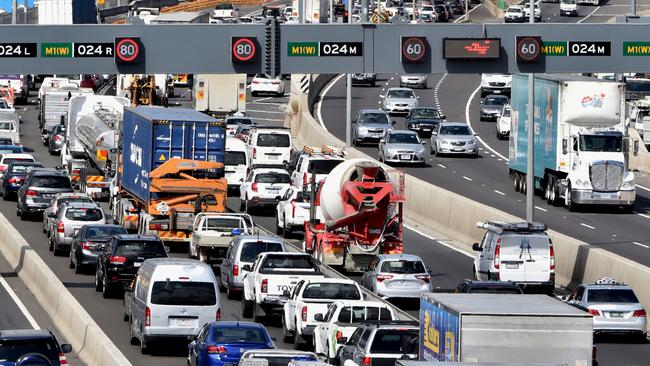Longer commute times driving increase in sick leave
One in three businesses are reporting an increase in sick leave taken by employees in the past year, and experts believe that our city’s gridlock and long commute times could be to blame.

VIC News
Don't miss out on the headlines from VIC News. Followed categories will be added to My News.
Gridlocked roads and long commutes have been blamed for adding to worker stress and sick leave.
The warning comes as new research suggests one in three businesses are reporting an increase in sick leave taken by employees in the past year.
Australian Payroll Association CEO Tracy Angwin said higher work demands combined with longer commute times caused by traffic congestion could leave staff feeling exhausted and overwhelmed.
“We are definitely seeing a rise in sick leave and I don’t think it is because people are getting more colds and flu. It’s got to be lifestyle, and certainly longer commutes would be contributing to that,” Ms Angwin said.
“In addition to taking longer to get to and from work, a lot of people are not switching off because your emails follow you home on your mobile devices.
“I think it’s a sign of the times.”

Industries experiencing the biggest spikes in sick leave were education and training; IT and telecommunications; and healthcare, a survey of 600 payroll managers conducted by the association found.
Ms Angwin said the World Health Organisation had recognised burnout from chronic workplace stress as an “occupational phenomenon”.
It was characterised by “feelings of energy depletion or exhaustion; increased mental distance from one’s job, or feelings of negativism or cynicism related to one’s job; and reduced professional efficacy”.
Ms Angwin suggested that staff who felt burnt out could ask their employer to consider flexible working arrangements.

“This can relate to the hours of work, days of work and even the location of your work,” she said.
“Most employees have the right to request more flexible arrangements but whether it is granted depends on the nature of the job.”
Keeping track of annual leave — and taking it — was another way to “re-set and recharge” to avoid burning out.
MORE NEWS:
AFL FIGURE BELIEVED DEAD IN CRASH NEW BALLARAT
THE TRAIN LINES STRUGGLING WITH PASSENGER SURGE
AMBOS SEEING RED OVER ANDREWS PAY DISPUTE
The research revealed some employees had not taken annual leave for more than 18 months, other than forced shutdown periods such as Christmas.
Seven in 10 quizzed payroll managers said their organisation had no system in place to ensure staff took their annual leave every year.
Big businesses had the highest growth in sick leave, with 36 per cent of payroll managers at larger organisations citing an increase.
That compared with 20 per cent noting more sick leave being taken at businesses with fewer than 10 employees.


